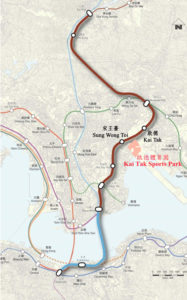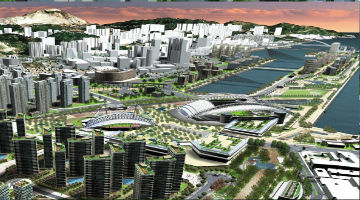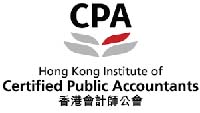Twenty years after the old airport closed, New World has won the 25 year Design Build & Operate contract for the Kai Tak Sports Park. The 28 hectare site will feature a 50,000 capacity stadium with retractable roof, an indoor stadium with capacity of up to 10,000, a 5,000 seat community sports ground plus a hotel and various shopping and dining space. Completion is scheduled for 2023.
This is good news even if belatedly so. For residents and visitors alike, we will soon be able to compete on a level playing field with … oh, just to pick an example, Singapore which opened its Sports Hub in 2014. At 35 hectares, Singapore’s hub is slightly bigger than HK’s park, its outdoor stadium seats 55,000, its indoor one 12,000 and it has an aquatic centre but, in terms of attracting international interest, they will now be comparable.
HK’s construction cost of HK$30 billion (US$3.8 billion) will be met by the Government so this is not PPP as we know it but, to the extent that the Government has the money and its cost of funds is lower than a private sector project’s, this makes sense depending on who bears the risk of cost overruns and delays. (Up to 60 consultants were used on the tender evaluation; those twenty years have seen much head scratching including one bizarre proposal to build out on pastoral Lamma island. The Government will have run up / written off huge development costs.)

The community facilities and open spaces won’t make commercial returns, of course. Food & Beverage facilities should cater to a variety of tastes and budgets (i.e. not just flogged off to the highest bidder as at the Rugby Sevens). Shopping facilities should be modest (this is not an airport where people have nothing else to do for an hour and, if you want to buy another designer handbag, you are already spoilt for choice).
So the utilisation of the major venues will be paramount. New World will be shouldering much of this risk – and will need to generate a lot of new events – but the Government will no doubt have given various assurances such as moving the Rugby Sevens and the Open tennis. Athletics will be relegated to the 5,000 seat stadium but this has no warm-up facilities as required for major international events. Yes, bring in non-sports such as concerts or, indeed, anyone who can pay to fill either stadium (maybe not Falun Gong). The outdoor stadium’s roof will be soundproofed so there will be no need for concert audiences to wear gloves so as to not waken the neighbours as was required for Elton John’s concerts at Soo Kon Po back in 1997 (I’m not making this up. He cancelled in disgust. The noise limits are still in place across HK). A hotel for visiting athletes sounds a good idea but, with such events occurring only intermittently, occupancy levels are unlikely to match the HK average of 86%.
Talking of Soo Kon Po, what should the Government do with the 40,000 seat HK Stadium which the Sports Park effectively duplicates but which itself is barely used outside the three days per year of the Rugby Sevens? It looks as though, one way or the other, Soo Kon Po will be collateral damage. And how would the Sports Park’s indoor stadium impact the Government’s 12,500 seat Coliseum, three MTR stops away?

What do we know about the project’s economics? New World is required to pay the Government HK$1.72 billion (US$220 million) over the life of the project plus 3% of its gross annual income – some sort of risk sharing is welcome. New World is expected to generate profits of up to HK$300 million (US$38 million) annually. When the Government is paying for the capex, this might be quite rich.
All in all, more state of the art leisure facilities are welcome even if I wonder at the process that got them here.







